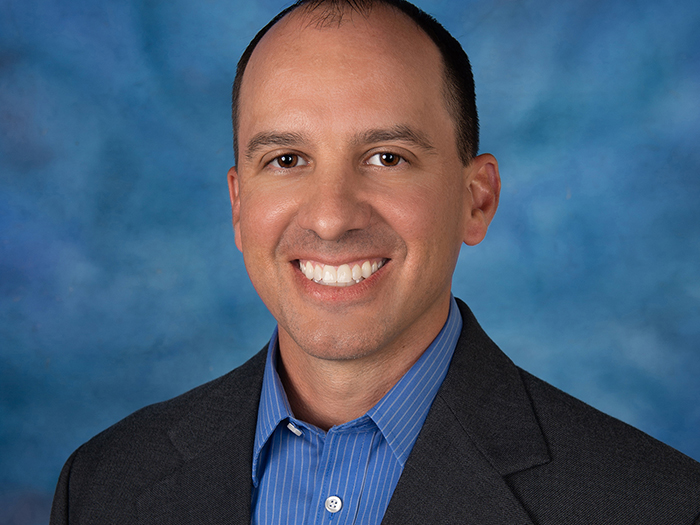Westfield’s Ray Ash on Financial Sector Brokering and Business Opportunities

As part of our expanded coverage of our 2025 Power Brokers, in this case, the financial sector winners and finalists, Risk & Insurance recently spoke to Ray Ash, a 2023 Risk & Insurance Executive to Watch. Ash is now Executive Vice President and Head of Financial Lines with Westfield Specialty.
Risk & Insurance: Thanks for meeting with us Ray. What are the most important things brokers can do for their clients in the current environment, besides being nuanced and thoughtful about coverage?
Ray Ash: One of the most critical things for brokers is staying informed about the news and changes in our world that impact the financial lines environment. Currently, there are three key areas that brokers are doing a good job of focusing on.
First, the change in the White House administration. The last time the administration changed, there was a spike in securities class actions (SCAs). While part of that increase was artificial due to merger objection suits, the previous Trump administration generally brought a lighter touch to the regulatory environment. In the absence of federal administrators bringing investigations, and implementing new regulatory requirements, the private sector can become more active, potentially leading to a frequency increase in SCAs.
Second, on the regulatory side, the Supreme Court recently struck down the long-standing Chevron doctrine in the cases of Loper versus Raimondo and SEC versus Jarkesy. This doctrine required courts to defer to administrative agency interpretations of laws passed by Congress. These judicial decisions raise questions about what may happen next and whether the lack of clarity about what the law may require could spur more private right of action litigation.
Lastly, there is a significant struggle surrounding ESG (Environmental, Social, and Governance) concepts. In prior years lawsuits were brought against private corporations challenging their allegedly insufficient efforts to acknowledge and become current with ESG topics. Now, we’re seeing the opposite, with suits being filed because litigants claim ESG programs may have gone too far, such as McDonald’s facing a lawsuit over programs that provide scholarships for their Hispanic employees, which some claim to be discriminatory.
Brokers need to ensure their clients are aware of these types of actions in the marketplace and double-check to ensure that their coverage is broad enough to address these issues if the client desires such protection.
R&I: How wide is the spectrum of broker awareness and education when it comes to the financial sector, particularly among those considered the best in the industry?
RA: The level of broker awareness and education varies. Some brokers have invested in product leaders who, while not necessarily placing coverage on a daily basis, have a greater responsibility to stay informed on these topics.
On the other hand, some brokers prioritize volume and rely on their individual brokers to stay abreast of these concepts and adjudicate coverage and policies accordingly. Ultimately, the level of sophistication and the willingness to invest in these areas determine a broker’s awareness and education.
R&I: What are the nuances in navigating a contentious claim situation for a client?
RA: Navigating claims successfully requires knowledgeable, sophisticated claims people on both the broker and carrier side who have a strong working relationship. Brokers must advocate passionately on behalf of their clients while acknowledging the importance of maintaining a healthy business relationship with the carrier.
When a carrier appropriately and timely adjusts a covered claim, clients believe their claim was addressed successfully, quickly, and fairly, and it can lead to a very long and productive relationship, which is the ultimate goal.
R&I: What is the importance of brokers building relationships with a carrier’s claims team in addition to their underwriters?
RA: It’s something that is often overlooked in client communications, despite brokers generally doing a good job of building relationships with underwriters and underwriting leadership. The most successful relationships involve the claims team and the claims advocates on the broker side, demonstrating that all parties involved want nothing but to appropriately adjust covered claims.
Relevancy in these relationships is very important. From the early days of an underwriter’s and broker’s career, the importance of relationships is stressed, but it extends beyond just the broker-underwriter relationship. Involving the claims team is crucial to demonstrate the carrier’s commitment to helping ensure that the policyholder receives the benefit of the coverage they purchased for covered claims. Such collaboration can also positively impact future coverage purchase decisions.
R&I: What risks do you identify as emerging in the financial sector?
RA: Global economics significantly impacts our clients and the products we provide. In the current uncertain global economic climate, interest rates in many regions are not decreasing, although the European Central Bank recently lowered them. The United States Federal Reserve, however, remained resolute.
The latest news shows that the GDP rate for 2024 is projected to be 2.5%, slightly lower than 2023, with some weakness in the fourth quarter. This raises questions about the implications for the American economy and the potential repercussions for the Federal Reserve and interest rates.
High interest rates can pose challenges for our clients, not only from a commercial perspective but also in the private equity and financial institution space. Leverage is often used to facilitate buyouts and future sales of portfolio companies, and if the financial metrics cannot be successfully balanced, it could lead to problems.
The best brokers are able to highlight these potential ramifications to their clients and discuss how underwriters assess their financials and future business prospects in light of the global economic situation. Underwriters are keenly aware of the impact of global economics on their clients’ businesses.
R&I: Are there areas of the financial sector that are struggling with capacity, and where do you see potential challenges arising?
RA: While there is generally more supply than demand in the financial sector, leading to increased competition, some pockets are experiencing challenges. Legacy claims from 2018 to 2020, particularly the spike in Securities Class Actions (SCAs), continue to impact the commercial side. On the Financial Institutions (FI) side, medium to large private equity firms are facing both frequency and severity in their claims.
Interestingly, despite these claims, there haven’t been corresponding increases in rates. This may be due to a reluctance among carriers most affected by these claims to be the first to raise rates. While Westfield Specialty is fortunate not to have this exposure, rates will eventually have to respond to these market factors.
In the large buyout private equity space, coverage remains broad, and pricing is still competitive. However, we expect to see a shift in 2025 and beyond, with less new carriers entering the market and legacy carriers reevaluating their support. This could be one of the first areas to experience rate pressure.
On the commercial side, Special Purpose Acquisition Companies (SPACs) and recent de-SPACs continue to be a concern. Allegations that certain forecasts and statements made in their public offering documents were false or misleading have been brought to the courts more frequently. The question arises whether this is due to weaknesses in their business or an intentional effort to defraud investors.
Overall, the American economy has been good, if not outright strong. However, we anticipate that weaknesses that may appear in 2025 will have a residual impact on various facets of our clients’ portfolios.
R&I: Can you share your thoughts on the value that brokers bring to the insurance industry, particularly the Power Brokers who are acknowledged for their expertise?
RA: The value that our brokers bring cannot be overstated, particularly the Power Brokers who are nominated and acknowledged for their expertise in their respective spaces. It is clear that many of their clients have fantastic outcomes as a direct result of their efforts.
We appreciate their contributions because their particular set of experience makes the transaction process much smoother. When you have someone who is sophisticated in a particular market segment, they are able to provide the underwriting side with the necessary information and nuanced insights that a less experienced broker might not appreciate. This enables deals to be completed more efficiently and effectively.
Congratulations to all of our brokers. We sincerely appreciate their support and wish them continued success. &










